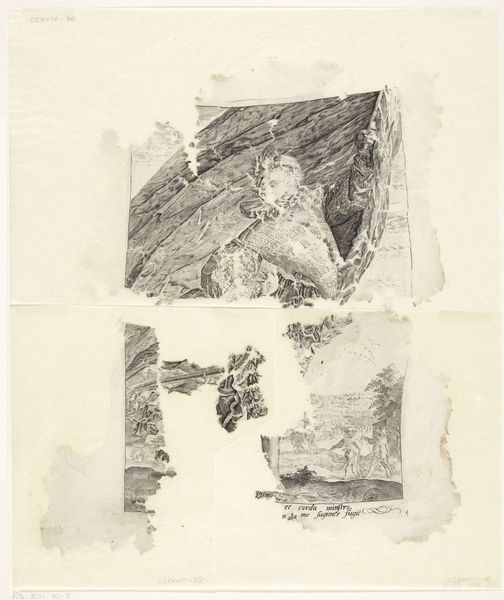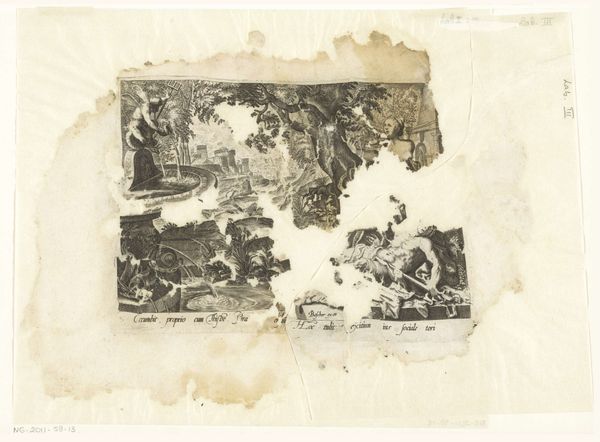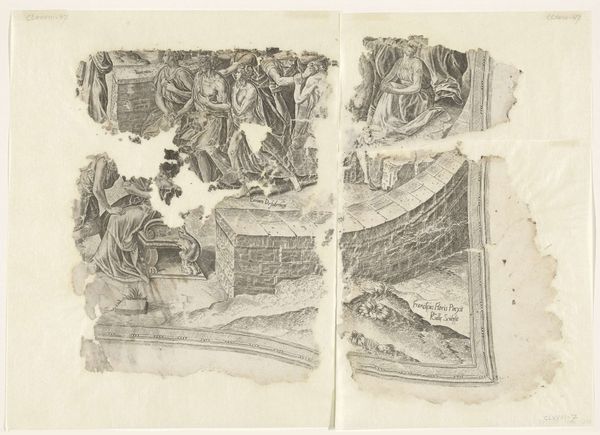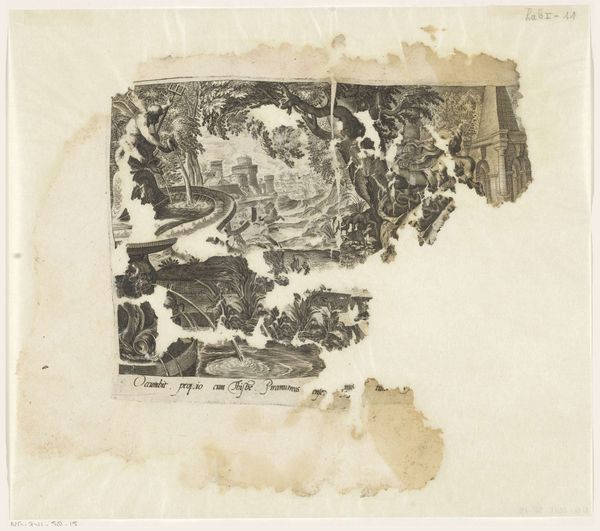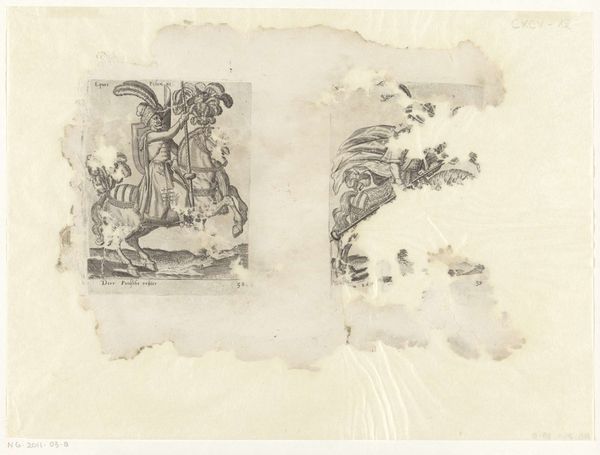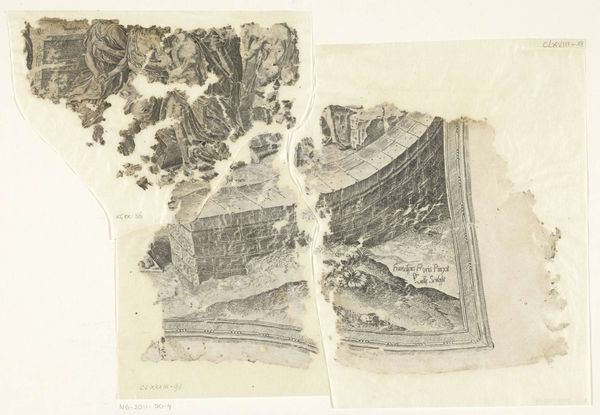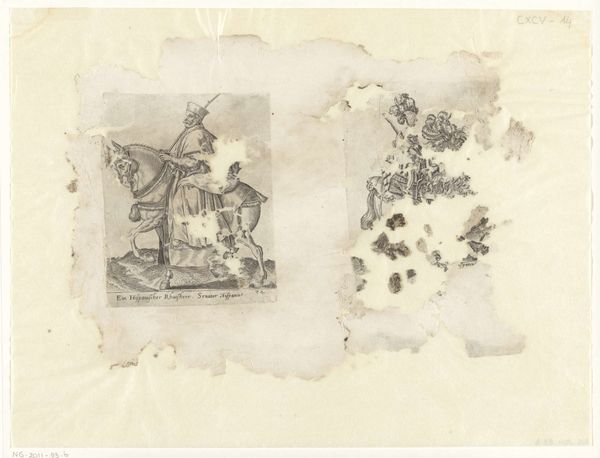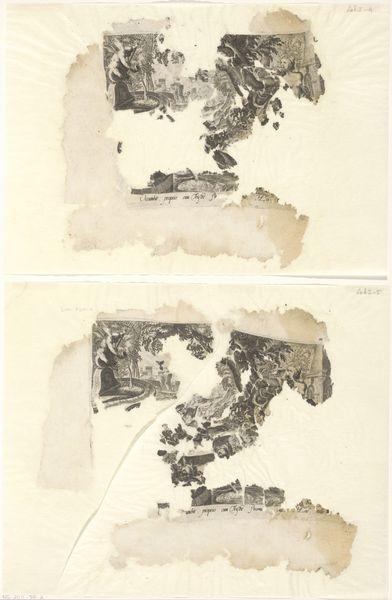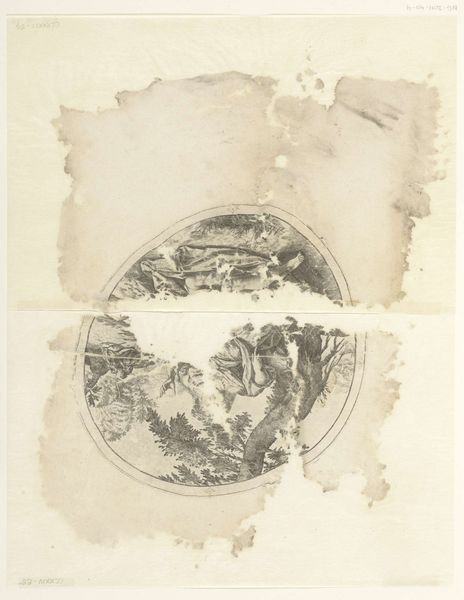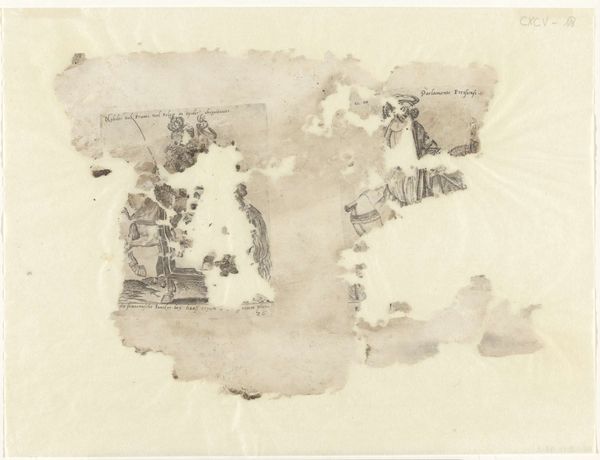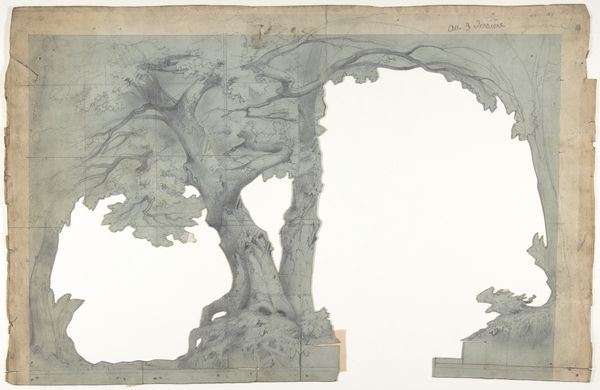
Rechteronderhoek van een prent van het tafereel van Cebes 1561 - 1596
0:00
0:00
graphic-art, print, engraving
#
graphic-art
# print
#
pen sketch
#
pencil sketch
#
history-painting
#
academic-art
#
engraving
Dimensions: height 284 mm, width 377 mm
Copyright: Rijks Museum: Open Domain
Curator: Looking at this work, I’m immediately struck by its fragility and fragmentary nature. Editor: That’s fitting, given what it is. This is the "Rechteronderhoek van een prent van het tafereel van Cebes" by Philips Galle, dating from somewhere between 1561 and 1596. It's currently held at the Rijksmuseum. What we’re seeing here is the bottom-right corner of a print, an engraving, depicting a scene from the Tablet of Cebes. Curator: So, this is just a fragment then? A study perhaps? It gives me such a direct sense of the artist’s hand, the marks of the engraver... I want to know about the quality of the paper, the type of ink used. What can it tell us about printmaking techniques of the period? Editor: The Tablet of Cebes itself is an allegorical work, a kind of philosophical guidebook, very popular during the Renaissance. Galle’s wider print, of which this is just a section, illustrates the arduous path to virtue and the pitfalls of vice. He operated in the environment of humanism; as you see, the narrative approach reflects societal preoccupations during that time. Curator: Yes, you can almost trace the original image even in this fragment! But my eye is drawn to the texture. You can almost feel the ridges and valleys of the engraved lines. What kind of tools did Galle employ, what workshops, and what kind of apprentices would produce an image like this? This piece speaks to a larger material practice of production and distribution. Editor: It's fascinating to consider how an image, intended to guide viewers towards moral perfection, begins its life as a physical object produced by a specific labor system and, subsequently, attains distribution, shaping societal understanding. Also, remember that Galle, as an engraver, disseminated the designs of other artists, exerting immense influence on the visual culture. This fragment is testament of the labor involved and how powerful workshops were to manufacture images for dissemination. Curator: So, we have to acknowledge the intellectual landscape shaping the iconography, but we must delve into what materials where used in its construction. Looking at the material, in this particular state of preservation, shifts the way we conceive of its overall influence. Editor: Exactly. That materiality impacts its accessibility and its endurance throughout time. This fragmented survival prompts to contemplate on what's been lost and the narratives inherent in even a portion of the artwork.
Comments
No comments
Be the first to comment and join the conversation on the ultimate creative platform.

